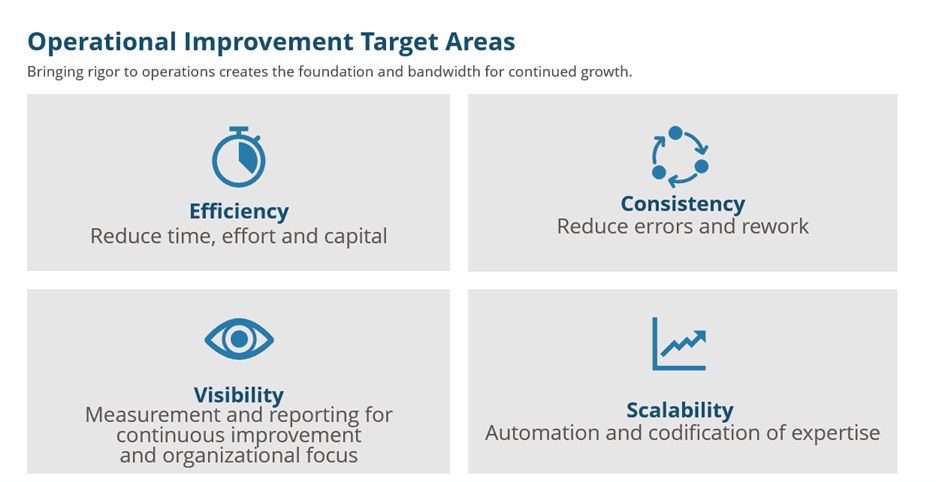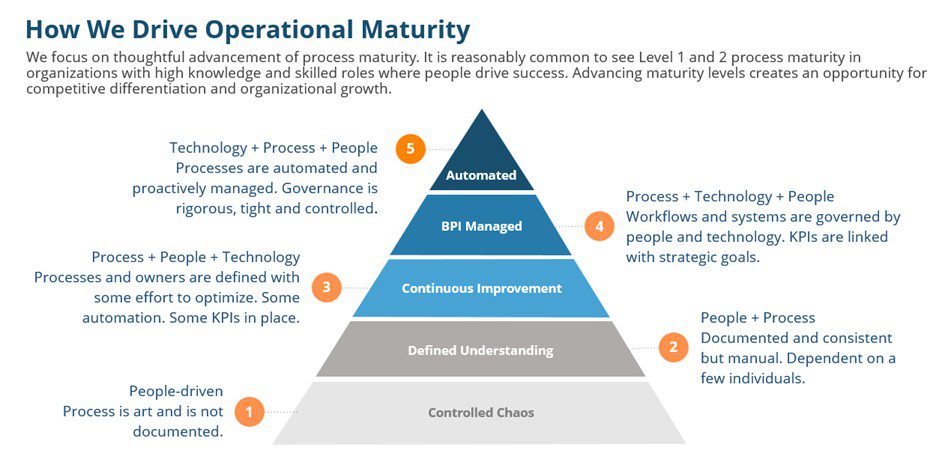At The Poirier Group, we have developed a deep understanding of the complexities and opportunities that the construction industry is facing. With the industry traditionally characterized by a multitude of small to medium-sized firms, we are witnessing a significant shift towards consolidation, where larger firms and investors are acquiring smaller companies. This trend is a result of competition and the goal of larger firms to capture greater market share, expand service offerings, and achieve economies of scale.
With the economic pressures that are fueling this trend, such as fluctuating demand, rising costs, and labor shortages – consolidation of firms makes sense to alleviate these pressures by pooling resources and enhancing competitive advantages. It also provides those smaller companies with improved access to capital that can facilitate technological investments leading to the ability to undertake larger projects.
However, we recognize that consolidation is not without its intricacies. Integrating diverse corporate cultures and management styles can present significant challenges. Navigating these complexities is crucial for organizations to successfully transition and fully leverage growth opportunities.
Key challenges construction organizations face during consolidation are rooted in operational maturity, which encompasses several aspects:
Efficiency: Organizations must streamline processes to eliminate redundancies and deploy capital effectively. The challenge lies in keeping operations agile and lean to support sustained profitable growth. It is crucial to avoid the trap of ballooning administrative costs as the business becomes more complex.
Consistency: Maintaining consistency in project delivery and service quality during and post-consolidation is critical. Establishing standardized procedures to reduce errors and enhance client satisfaction is a significant hurdle. This does not mean becoming rigid, but old ways of working must be challenged.
Visibility: Implementing robust measurement and reporting systems is necessary for gaining insights into performance and aligning initiatives with strategic goals. This requires a thoughtful approach to ensuring management has the information they need to run the business.
Scalability: As companies grow, the ability to automate processes and codify expertise becomes vital. Handling increased business volumes without proportional rises in resources or costs is a complex task.

It is important leaders understand the progression through the operational maturity model as organizations move from states of ‘Controlled Chaos’ to where processes become fully automated. Not all processes need to be automated; it is necessary to understand the trade offs between costs and the benefits you will realize.

Many organizations going through consolidation efforts utilize new capital to implement technologies to drive efficiencies in the business. Building Information Modeling (BIM) remains at the forefront, offering a digital representation of the physical and functional characteristics of a facility. BIM enhances collaboration across multidisciplinary teams by providing a shared platform for design and project management, thus streamlining workflows and reducing conflicts during construction. Construction firms are also turning to advanced project management software like Procore and Autodesk. These platforms improve communication and coordination by centralizing project data and documentation, ensuring consistency and reducing the risk of errors and delays.
In the pursuit of growth and efficiency through consolidation, construction firms must remain vigilant not to lose sight of their core values—the foundation upon which their success has been built. While consolidation offers significant advantages, such as expanded market share and enhanced resource capabilities, it also presents the risk of diluting a company’s unique identity and the intrinsic qualities that have driven its achievements.
Core values, such as integrity, quality craftsmanship, customer focus, and a strong workplace culture, are pivotal elements that differentiate firms in an industry characterized by tangible outputs and robust competition. As consolidated entities seek to harmonize diverse corporate cultures and streamline operations, it is essential that they reinforce these values consistently across all levels of the organization. This can involve clearly communicating the company’s mission and principles during the integration process and embedding them in the decision-making frameworks, policies, and everyday practices.
Leadership plays a critical role in this endeavor. By exemplifying the organization’s core values, leaders can inspire their teams to uphold the same standards, ensuring that the essence of what made the firm successful remains intact. Moreover, actively engaging employees from both legacy and acquired entities in value-driven dialogue and collaborative initiatives can foster a cohesive and motivated workforce committed to a common vision.
Customer relationships are also crucial. Maintaining open communication with clients and delivering on promises fosters trust and loyalty, preserving the brand reputation built over time.
Ultimately, while consolidation is a pathway to enhanced capabilities and growth, it should not overshadow the fundamental ethos that defines a company’s character. By integrating new opportunities with an unwavering commitment to core values, firms can navigate change effectively while preserving the essence of what makes them special and successful.
Through understanding these challenges, we appreciate the journey that construction organizations undertake. Consolidation can transform these challenges into opportunities for strategic growth when approached thoughtfully, enabling firms to navigate an increasingly competitive and integrated marketplace successfully.
Through our experience of consolidation challenges, we can appreciate the journey that construction organizations have when they want to grow their businesses through acquisitions. If consolidation makes sense as a strategy for growth, then its time to get ahead of the game before you begin looking at targets.
Success is a journey, and while often hard fought, it doesn’t have to be. If you are ready to scale, we can help build the foundation for sustainable growth.